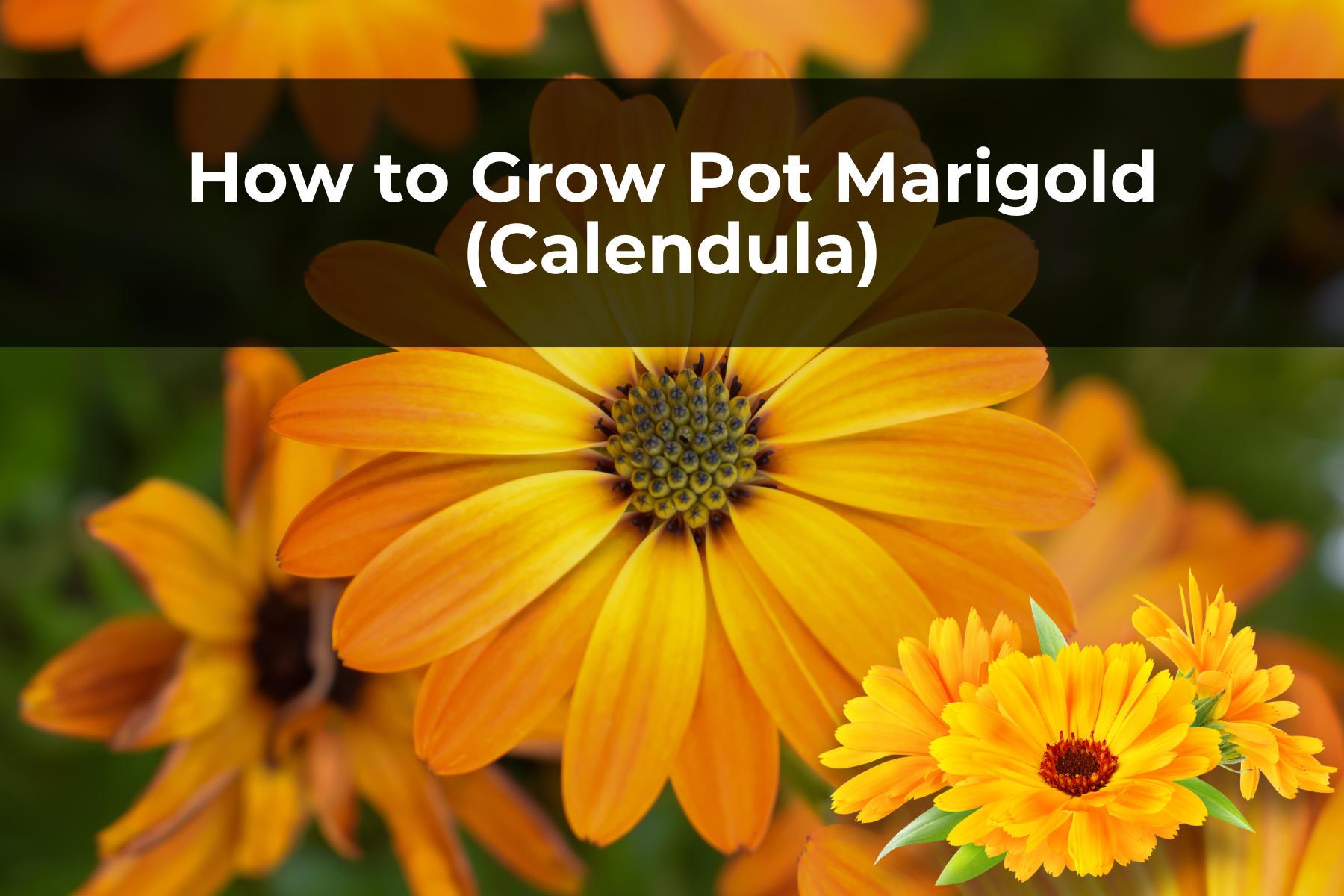Last Updated on April 12, 2024 by Real Men Sow
Pot marigold (Calendula) usually look like bright, cheerful and gladsome flowers that can add a touch of colour to any garden. Every single flower is about 1” in diameter and its petals are yellow. These flowers are known for their healing properties. With its distinctive daisy shape, this flower is capable of making most gardens beautiful and cheerful.
These flowers help flavour soups and stews in older times. This is why they are commonly called pot marigolds. It has been proven that dried Pot Marigold (Calendula) petals can be substituted for saffron.
Planting and Growing Pot Marigold (Calendula)
This is a classic cottage garden plant that makes a happy contribution to flower borders and front gardens. You can also use this plant can be used as a colourful addition to your herb garden. The flowers are what you use in the kitchen, even though the leaves can be pungent.
Pot Marigold (Calendula) are quick-growing, making them ideal for children and beginners to grow. Cut flowers are best for tall varieties. It does not require support or staking.
Sowing Pot Marigold (Calendula) Seeds
Pot Marigold (Calendula Officinalis) was originally from the Mediterranean but its tough nature has enabled it to settle in the temperate regions. It can also tolerate some shade and most soil types. It thrives in sunnier areas, particularly if the soil is well-drained. Then, you’ll get hundreds of flowers if you plant them there.
Autumn Sowing
Planting them in autumn gives the plants a head start and will result in flowers that appear much sooner. Pot Marigold (Calendula) seeds germinate best at between 15-25°C (59-77°F). If it is cooler or hotter than this, you may not see many seedlings emerge.
Sow in autumn six to eight weeks prior to the first frost. Use a tray or modules containing one-part perlite (or grit) and three-parts multi-purpose compost. You can top dress the seeds with horticultural grit, water it in and store the undercover in a sunny place. Seeds should be planted 1.25cm (1 1/2″) deep.
After sowing, you’ll start to see the leaves emerge between 6 and 15 days later. The plants can be protected from the cold and slugs and will survive the winter. You can then plant them outside once the last frost has passed. You will want to plant individual plants if you have them in a tray.
Spring Sowing
Pot Marigold (Calendula) seeds can also be sown in spring modules. If you are starting them indoors or in a heated greenhouse, follow the same steps as above. Sow six to eight weeks before the last frost date. However, if your greenhouse is not heated, sow the plants after the last frost date.
Where to Grow Pot Marigold (Calendula) Flowers
It is ideal for borders and edging in mixed flower gardens. This product is suitable for city, courtyard and town gardens. This is a great choice for wildlife, cottage and informal gardens. To encourage beneficial insects, they can be grown in the garden. However, they can thrive anywhere you plant them, and will often self-seed themselves, providing you with years of vibrantly coloured blooms.
Pot Marigold (Calendula) Care Guide
Pruning
If you want more bushy growth, then pinch the terminal shoots. To prolong the flowering period, deadhead plants regularly. They will also stop self-seeding by not producing hundreds of seedlings.
Pests and Diseases
Aphids and caterpillars can cause severe damage to your leaves. Additionally, in damp conditions, powdery mildew or rust can cause leaf damage.
Companion Planting
Pot Marigold (Calendula) is often used in the garden as a companion plant for vegetables that require pollination. These vibrant flowers attract butterflies that will fly over to pollinate cucumbers, zucchinis, and pumpkins. You can also grow Pot Marigold (Calendula) as a companion plant for many edible plants, including:
- Asparagus – repels the asparagus beetle
- Pumpkins and squash – attract bees to their flowers
- They draw aphids away for cabbages, kale, and lettuces
Pot Marigolds (Calendula) downside is their dense growth making it a great place for snails and slugs to hide. Therefore, you shouldn’t plant them next to any other plants you don’t want to lose.
Propagating Pot Marigold (Calendula)
Propagate from seed that has been sown in situ, either during spring or fall (March-May to September-October). Young plants should also be spaced 12in (30cm) apart. To extend the flowering season, you can sow succession seeds up to early summer.

